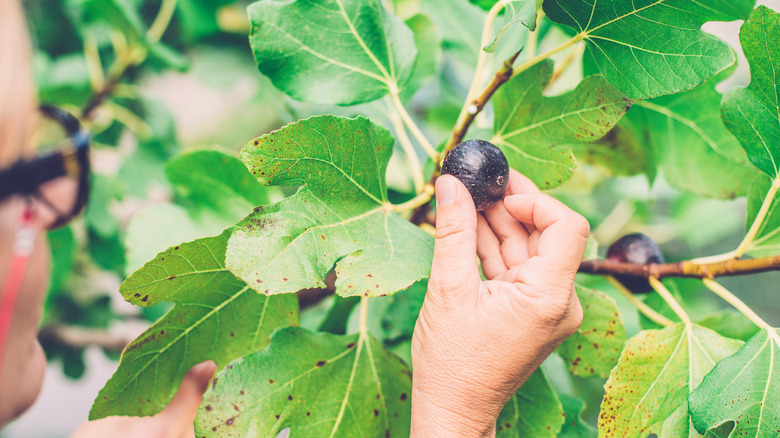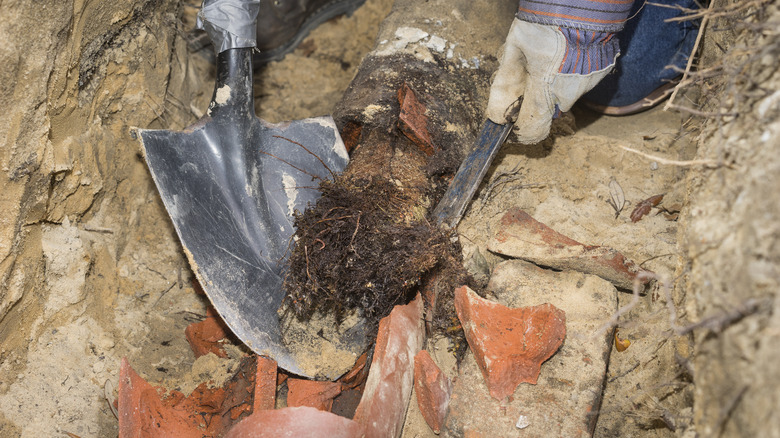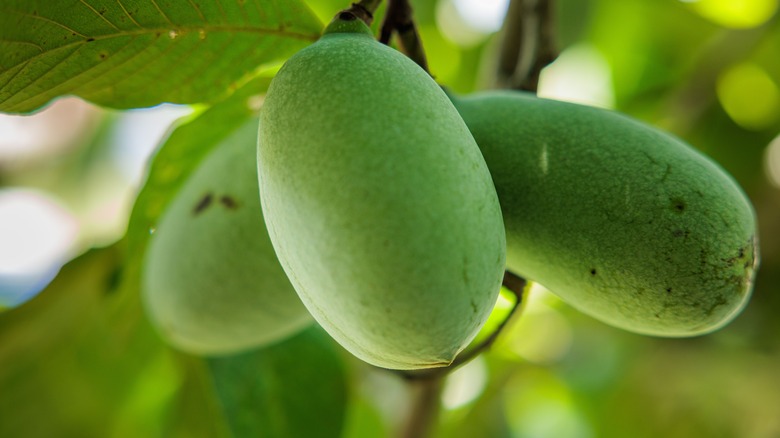Why You May Want To Reconsider Growing Fruit-Bearing Fig Trees In Your Yard
Fig trees can be a beautiful and delicious addition to a yard or garden, but they come with some potentially major drawbacks. Not only can the trees become invasive in some regions, but their aggressive roots can damage pipes and other infrastructure. Even worse, the sap of the plant can cause dermatitis in people and serious stomach and skin problems for pets and livestock.
Figs (Ficus carica), while originally from Asia and the area around the Mediterranean, have long been grown in the United States, both as an ornamental tree and for their delicious fruit. California, in particular, has an ideal climate for the fruit trees, and the vast majority of figs sold in the U.S. are grown there. Unfortunately, that ideal climate is a double-edged sword. Wild figs that have escaped gardens and orchards are now considered somewhat invasive in parts of both California and Florida. These wild figs can form dense thickets and outcompete native plants. They can also use up water that other plants and animals depend on.
Figs can damage pipes and harm pets
Even if you don't live in Florida and California, there are still some important things to know before planting a fig tree. The trees have shallow but aggressive roots, and Ohio State University Extension notes that they should not be planted near "drainpipes, sewer lines, or other underground infrastructure potentially affected by invasive roots." If tree roots seriously harm the plumbing in your house it can be an expensive and unpleasant situation to fix, so fig trees should be planted with care. Smaller fig varieties can be easily grown in pots, allowing you to grow delicious fruit with no risk to your sewer system.
Arguably, the biggest concern with growing a fig tree in your yard is the risk to pets and people. While fig sap should only cause irritation and a photosensitive skin rash for people who touch it, pets and livestock who eat the leaves of fig trees can become quite sick from this sap, with symptoms including vomiting and other gastrointestinal issues. If you have pets who are prone to nibbling on plant leaves, then it may be best to avoid fig trees altogether.
Removing and replacing fig trees
If you already have fig trees growing in your yard and want to remove them, then be warned that simply cutting down the trees may not be enough as figs often sucker from their roots. Instead, you may need to either repeatedly cut off the suckers or grind down the stump. Basal bark herbicide treatments, which are applied directly to a tree's bark, may also be effective. Be sure to wear gloves when removing fig trees to avoid coming in contact with the irritating sap.
Gardeners looking for a North American native fruit tree to grow instead of a fig may want to consider either pawpaws (Asimina triloba) or American persimmons (Diospyros virginiana). While pawpaw trees attract butterflies and thrive in zones 5 through 9, for them to bear fruit, they must be pollinated by a different, non-genetically identical pawpaw. It is also not recommended that people eat too much of the fruit as it can cause stomach irritation and the skin and seeds can also cause dermatitis. American persimmons, which grow in zones 4 through 9, are not known to be toxic but they require both a male and female tree to produce fruit and can reach heights of over 80 feet, something not everyone has the space for. If neither tree works in your yard, a small blueberry or cranberry bush is a good way to grow a native fruit-bearing plant without sacrificing too much space.


